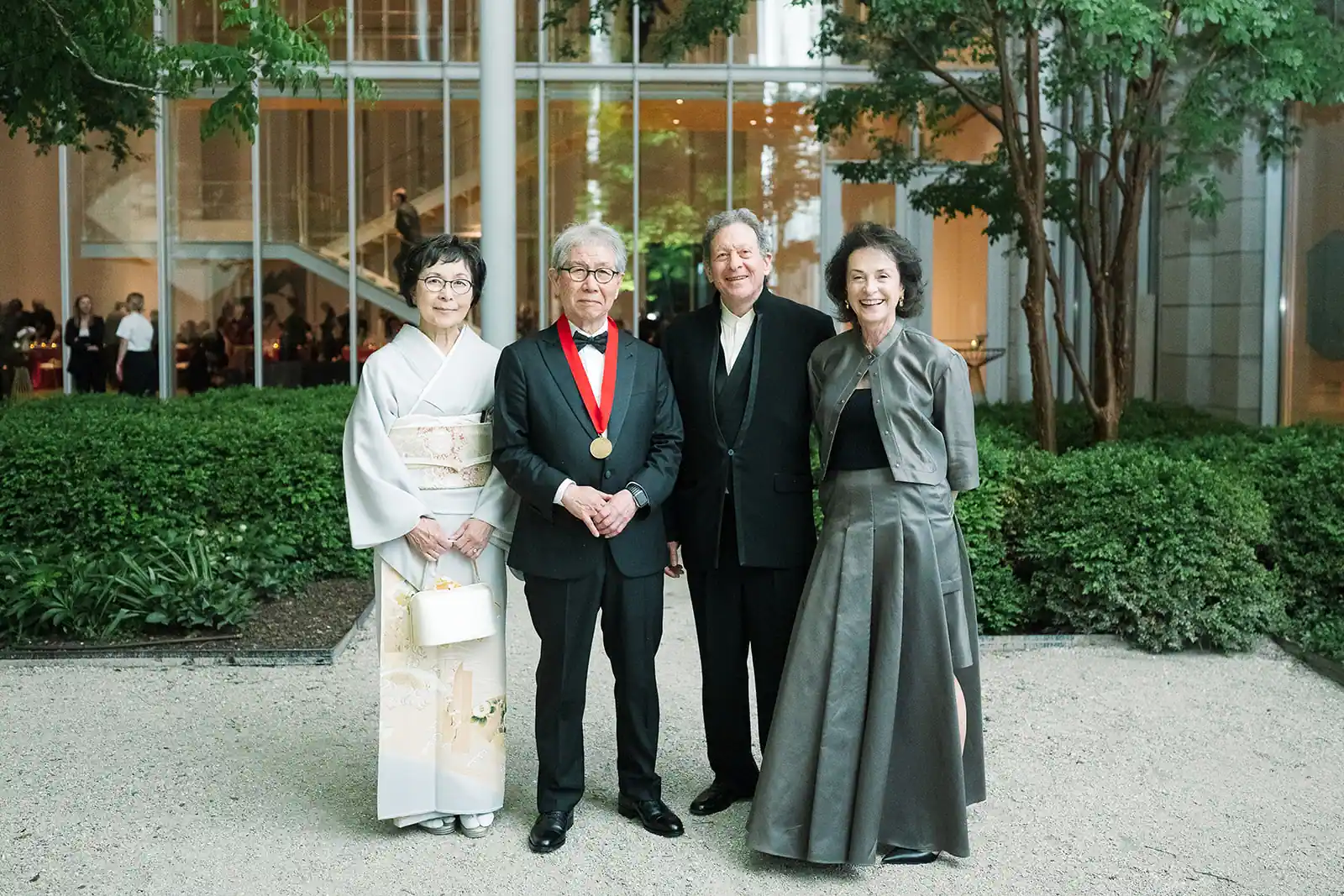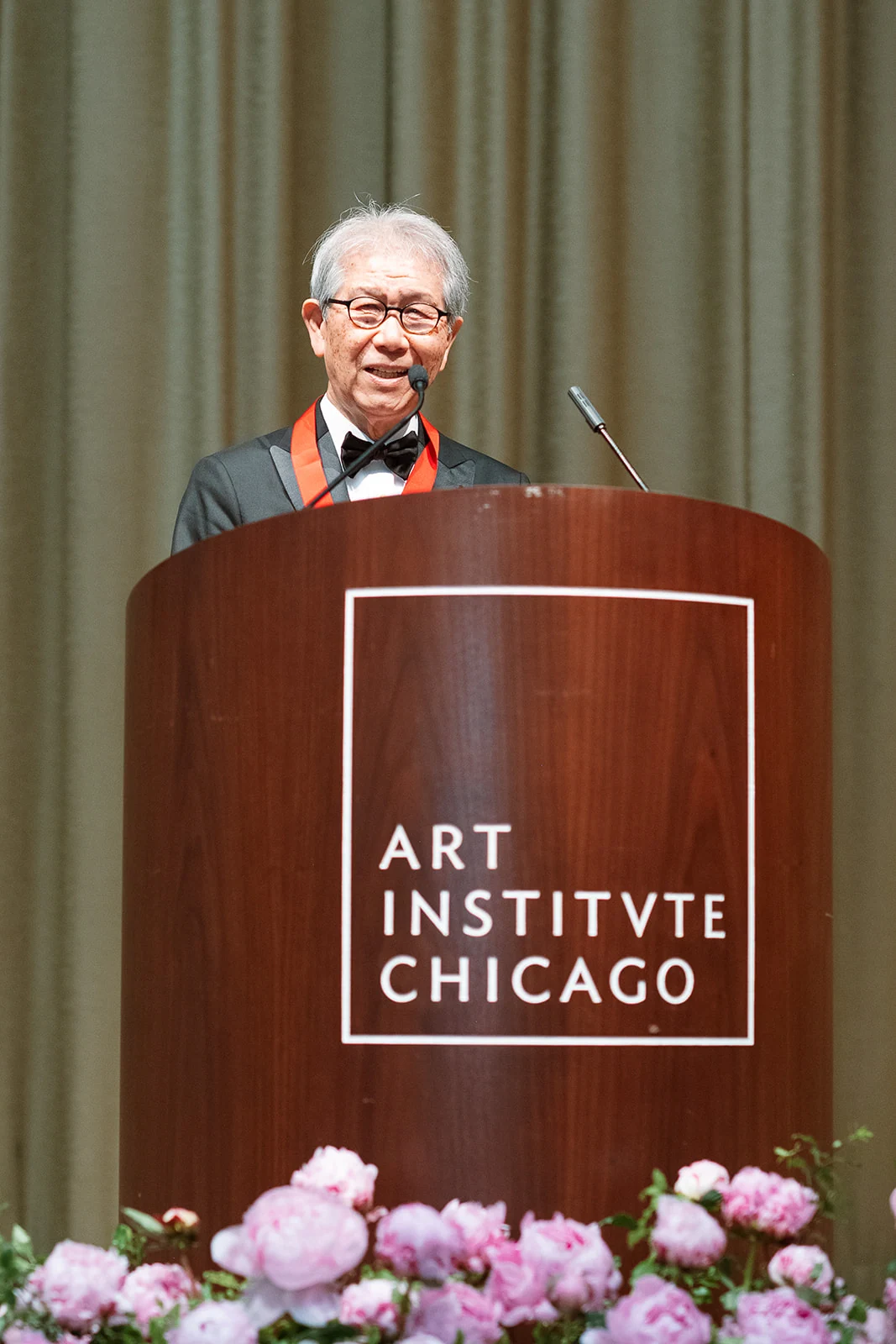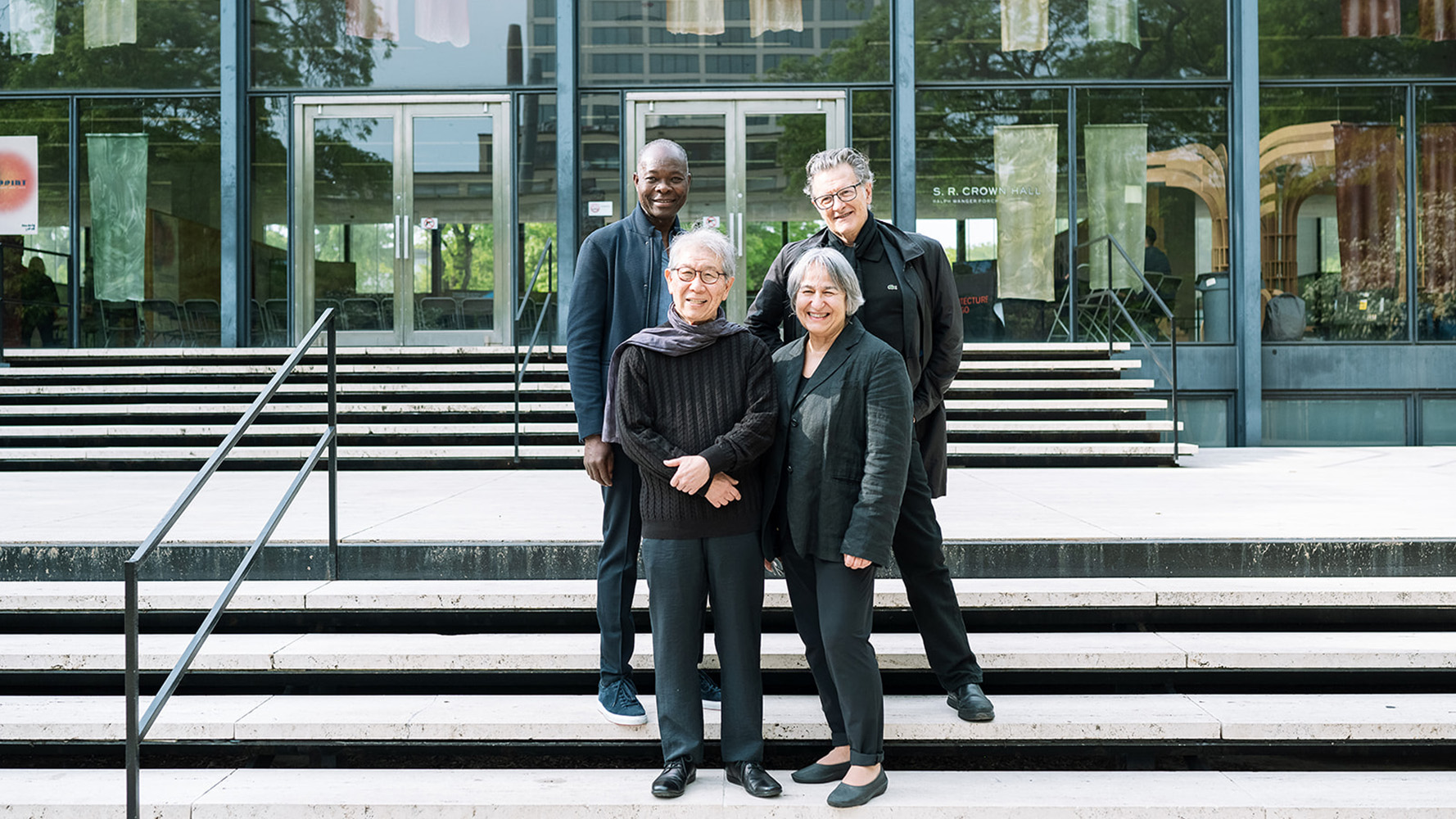Riken Yamamoto Awarded the 2024 Pritzker Prize in Chicago

Riken Yamamoto's Jian Wai Soho complex (2004) in Beijing (left) and Tom Pritzker awarding the architect with the Pritzker medal on a May 18 ceremony (right). Photos © Riken Yamamoto & Field Shop (left); Heather Hackney Photography for The Hyatt Foundation / The Pritzker Architecture Prize (right)
For the Pritzker Architecture Prize, the latest ceremony honoring 2024 laureate Riken Yamamoto, which took place at the Art Institute of Chicago Saturday evening, marked a homecoming. Past ceremonies have taken place at architecturally significant sites around the world, including last year’s event for David Chipperfield on the ancient Agora in Athens. This year, Cindy Pritzker, who established the award with her late husband Jay Pritzker in 1979, and who turned 100 in December, was present at the ceremony in her home city. (The Pritzker family’s international business interests are headquartered in Chicago.)

Riken Yamamoto (center, with medal) with his wife, Mariko (left), and Tom and Margot Pritzker (right). Photo © Heather Hackney Photography for The Hyatt Foundation / The Pritzker Architecture Prize
In awarding Yamamoto the Pritzker medal, Thomas Pritzker, Cindy and Jay’s eldest son and chief executive of the Pritzker Organization since 1995, called the Japanese architect a “philosopher.” And indeed, the work of the Yokohama-based laureate—the ninth hailing from Japan, the most of any nation—is firmly centered around the idea of community, which he discussed with RECORD earlier this year.

Photo © Heather Hackney Photography for The Hyatt Foundation / The Pritzker Architecture Prize
Ahead of Saturday’s ceremony, Yamamoto gave a lecture at Crown Hall on the campus of the Illinois Institute of Technology (IIT), talking about how his work has been influenced by settlements and houses in ancient Greece and Mesopotamia, as well as modern-day India and Spain, places he visited in his early travels. In describing those abodes and the varying notions of public and private, he referenced the writings of Hannah Arendt, particularly The Human Condition, and the idea of thresholds. He pointed to his 2010 Pangyo Housing project in Seongnam, South Korea as a representative example. At first, there was mixed reception to his design from people who thought the heavily glazed main level of the small individual housing blocks would not allow for enough privacy. But as residents moved in, they embraced the plan, and Yamamoto took great pride in the community’s success.

Pangyo Housing (2010) in Seongnam, South Korea. Photo courtesy Kouichi Satake
Occupants of Yamamoto’s buildings throughout Japan have also shown their appreciation to the architect, as Alejandro Aravena, 2016 laureate and chairman of the Pritzker jury, described. “We toured several of Yamamoto’s buildings with him around the time of the Pritzker Prize announcement,” he recalled. “At the first, a school, the children and teachers applauded him. At the second, a firehouse, the firefighters applauded him. By the time we got to the third, a university building, late in the evening and there were not many people around, I applauded him! As a work of architecture, it was a masterpiece.”
Other Pritzker Laureates in attendance at this year’s ceremony were Glenn Murcutt; Rafael Aranda, Carme Pigem, and Ramon Vilalta of RCR Arquitectes; Kazuyo Sejima and Ryue Nishizawa of SANAA; Wang Shu; and Yvonne Farrell of Grafton Architects. Recent laureates Anne Lacaton, Jean-Philippe Vassal, and Francis Kéré were in conversation with Yamamoto after his talk at Crown Hall—with Vassal noting that he’d like to spend the night in Mies’ master work.

(Clockwise from top left) Francis Kéré, Jean-Philippe Vassal, and Anne Lacaton joined Riken Yamamoto at IIT’s Crown Hall for a conversation following a lecture by Yamamoto. Photo © Heather Hackney Photography for The Hyatt Foundation / The Pritzker Architecture Prize
Following the awarding of the Pritzker medal, attendees—which included current and past jury members and local architects John Ronan, Jeanne Gang, and Carol Ross Barney, among others—convened for dinner in the Modern Wing of the Art Institute, designed by 1998 laureate Renzo Piano.




